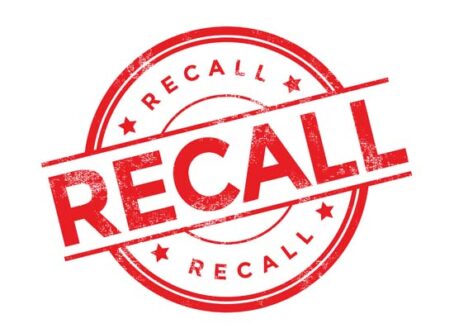Teamsters vs. Yellow, a fight neither can afford
The International Brotherhood of Teamsters is snarling and snorting a lot lately. Maybe it pleases the membership, but it takes a serious toll.
Hey, I get it. Contracts reached three or four years ago didn’t account for inflation. Drivers and dock workers have watched freight and parcel rates rise while not seeing any of it in their paychecks. Meanwhile, the job hasn’t gotten any easier. They’re pissed.
So, it’s no surprise that new Teamsters President Sean O’Brien is talking tough. It’s what some angry members want to hear. But O’Brien may come to regret at least some of the things he has been saying to reporters, among others.
Take Yellow, the biggest Teamsters LTL. More than two years ago, the company announced it would be reorganizing to incorporate its three regional carriers into its national network. The move necessarily involves closing some terminals, in this case 28. It’s not the kind of thing that makes union members happy, and – let’s face it – nobody resists change more than unions.
Eye on the prize
According to Yellow, the idea is to improve customer service. That’s what big business always says in cases like this, of course, but here Yellow has stated a sensible, specific goal. The company wants to retain the regional, often overnight, service provided by its subsidiaries. Yellow likes to call it next-day service, and it’s profitable.
Picking up one day and delivering the next is what virtually all shippers want from a carrier. It’s the ideal trucking service. In truckload, if you have the hours, you load up on Monday, drive through the night and deliver Tuesday. It doesn’t happen as often as it did pre-ELD, but shippers still love it when it does.
Overnight delivery is more challenging for LTLs because of the freight handling involved, but it works well when both the pickup and delivery locations are served by the same terminal. It gets a lot harder when one terminal picks up and another delivers. Then we’re talking about two cross-dock movements and a linehaul happening overnight. It’s a stressful exercise in timing, but some carriers can do it. They are invariably local or at most regional carriers structured for just that kind of service.
Yellow has three such subsidiary carriers, Reddaway in the West, Holland in the Midwest and New Penn in the Northeast. Their regional drivers operate alongside Yellow drivers, picking up and delivering at the same places. It’s the kind of duplication that drives management and stockholders crazy, and it’s an obvious target for any carrier laden with debt and struggling for profitability. Like Yellow.
Yellow is not going to last a whole lot longer without becoming reliably profitable. They can’t do that without consolidation, and they’re trying to consolidate without sacrificing that profitable regional, overnight business. The Teamsters aren’t making it easy.
Challenging transformation
Wouldn’t it be great if Yellow could pull it off without closing terminals or reducing payrolls? Sure.
Is that possible? No, it’s not.
On the other hand, is Yellow management doing everything right? I doubt it.
After all, Yellow is a big motor carrier with 30,000 employees, and we all know how badly trucking behemoths can behave. But Yellow is not a thriving upstart kicking butt. It’s the last mega-LTL from the long-ago days of regulation, struggling in today’s marketplace precisely because it is a Teamsters carrier.
Of course, I do not know the details of the Teamsters’ differences with Yellow. I have no inside information on what may be going on there, but from my desk, with the information that is available, the union at least appears to be acting badly.
In the dispute over reorganization, the union has suspended talks with Yellow and now says they won’t allow the company to buy outside transportation, something the carrier does to augment its linehaul capacity at busy times. The union is making an issue of a Yellow requirement that some reassigned drivers sometimes handle freight on the dock – an ancient work rules issue that should have died long ago. LTL pickup and delivery drivers are freight handlers by definition. Of course they should handle freight if they’re on the dock.
O’Brien has also said he plans to “fight like hell” in all contract negotiations and has made it clear strikes are a real possibility. I presume that includes Yellow, where the current contract is up next year.
I hope I’m wrong, but it sounds like a lot of adolescent foot-stamping that can only help move the date of Yellow’s almost inevitable demise that much closer. Even if O’Brien is just putting on a show for his members, they’re not the only ones listening. When sensible shippers hear his public complaints and even threats, they get nervous.
Can I count on Yellow to pick up? Can I count on them to deliver? What if my shipments are caught in some local job action or even a companywide strike?
Backing into a corner
If you have ever answered phones at a carrier grounded by a strike, you understand how attractive nonunion carriers can suddenly become to shippers and their customers.
Is anything like that likely? I certainly hope not, but the tough talk is concerning – the hotter the rhetoric, the greater the concern. And once fightin’ words have been spoken, they’re hard to back away from should conditions change – when it becomes clear a carrier will go broke if it accepts union demands, for example. That’s when a fiery leader like O’Brien could find himself sweating in the corner he talked himself into.
Contract talks are now underway between the Teamsters and carriers ABF, TForce Freight, and UPS – with 350,000 employees the Teamster’s biggest employer by far. So, its quarrel with Yellow may feel like a sideshow.
It is not. LL









